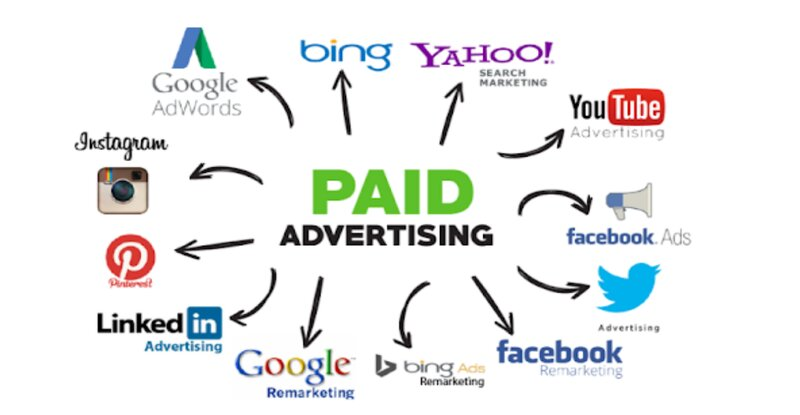When it comes to your ecommerce marketing budget, you will need to plan strategically to spend the least amount of business money but achieve the best results. Do you have an idea of how much is appropriate? Where to put your money in? Let’s read our article to find out!
Setting the Right eCommerce Marketing Budget for Your Business
We know it will take time to create a smart ecommerce marketing budget to invest in the right areas to grow your business. Spend too little, and you might struggle to attract customers. Spend too much in the wrong places, and your ROI suffers. So, how do you find the balance? Let’s break it down.
1. How much should you spend?
There’s no one-size-fits-all answer, but a common rule of thumb is to allocate 7-12% of your revenue to marketing.
- New businesses often need to invest more (closer to 12%) to build brand awareness.
- Established brands with a steady customer base may spend less (around 7%) while focusing on retention.
- Highly competitive industries (like fashion or beauty) usually require a higher budget to stand out.
2. Factors That Affect Your Budget

Your ecommerce marketing budget needs to match your business’s reality. How much you spend depends on where you are, what you want to achieve, and who you’re up against.
2.1. Your Business Goals
This is the most important factor when deciding an eCommerce marketing budget. Are you launching a brand-new product or expanding into a new market? If so, you’ll likely need a higher budget because growth requires visibility, and visibility often costs money. Paid ads, influencer marketing, and social media promotions can quickly eat up your budget, but they’re necessary for rapid expansion.
On the other hand, if your goal is to maintain steady sales and maximize profit, you don’t have to spend as aggressively. Instead, your budget should focus on retention strategies – email marketing, content creation, and customer loyalty programs. These cost less than paid ads but still keep your business growing.
2.2. The Level of Competition in Your Industry
Competition is another big factor. If you’re selling in a niche with tons of other brands, advertising costs are naturally going to be higher. For example, in industries like fashion or skincare, where every company is bidding for the same audience, you might need to increase your marketing budget or find creative ways to stand out.
Moreover, in a less competitive industry, you won’t have to fight as hard. With fewer businesses running ads or dominating search results, you can often rely more on organic traffic and word-of-mouth marketing, which means you don’t need to spend as much.
At the end of the day, your marketing budget isn’t just a fixed number – it’s something that should adjust and evolve based on your business size, goals, and competition.
3. Fixed vs. flexible budgets: Which one works best?
When structuring your eCommerce marketing budget, you need to decide between a fixed or flexible approach. Let’s see how they differ.
If you choose to calculate a fixed amount from the beginning, you have to find the most optimal options for each cost item. Therefore, sometimes you will not find the best option. However, it ensures that the spending is useful and ensures consistency for the marketing campaign.
For a flexible budget, businesses can allocate more money to marketing when they see potential in user trends. And the downside is that it needs to be closely monitored to avoid overspending or ineffective resource allocation.
However, combine both methods when building an eCommerce marketing budget. You can spend a fixed amount on long-term strategies such as SEO or brand marketing. As for paid advertising, you can consider increasing or decreasing depending on the performance situation.
How to allocate an eCommerce marketing budget strategically?
To make sure your eCommerce marketing budget is well spent and gets the best results, there are a few rules you need to follow.
1. Paid Advertising

Paid advertising, including Google Ads, Facebook Ads, and TikTok Ads, is often a go-to strategy for ecommerce brands looking to drive immediate traffic and sales. However, ad costs have been rising due to competition, so brands need to be strategic rather than simply increasing ad spend.
Instead of focusing only on broad reach, many businesses are shifting toward:
- Highly targeted campaigns that prioritize high-intent buyers.
- Retargeting strategies to re-engage visitors who didn’t convert.
- AI-driven ad optimization, using machine learning to refine audience targeting and budget distribution.
2. SEO & Content Marketing
While paid advertising delivers quick results, SEO and content marketing build long-term, sustainable growth for your brand. First, create an SEO strategy that focuses on high-quality content that meets user search intent. For example, blog pages, product how-to videos, and purchase pages.
You can hire an agency to develop a comprehensive keyword strategy tailored to your business goals. They will conduct in-depth research, analyze search intent, and identify high-value keywords that drive both traffic and conversions. This approach ensures that your SEO efforts are data-driven and aligned with your target audience’s needs, saving you time while maximizing results.
3. Influencer & Social Media Marketing

Consumers trust recommendations from real people more than traditional ads, which is why influencer marketing continues to grow. However, the landscape is shifting. Instead of relying solely on mega influencers, brands are seeing stronger engagement from micro- and nano-influencers with highly engaged niche audiences.
Social commerce is also on the rise, with platforms like TikTok Shop and Instagram Shopping making it easier for users to purchase directly from social feeds. Allocating budget to these areas, especially with a mix of organic content and paid influencer partnerships—can drive both brand awareness and direct conversions.
4. Retention Strategies
Acquiring new customers is expensive, which is why successful brands dedicate a portion of their marketing budget to customer retention. Strategies like email marketing, loyalty programs, and personalized offers encourage repeat purchases and improve customer lifetime value (CLV).
With the decline of third-party cookies, first-party data is becoming more valuable. Email and SMS marketing remain cost-effective ways to engage existing customers, while AI-driven personalization tools help brands deliver more relevant product recommendations and offers.
Practical Tips to Optimize eCommerce Marketing Budget

Too many ecommerce brands either overspend on short-term wins or cut back too aggressively, leaving them stuck in cycles of unpredictable revenue. The key? A balanced approach that keeps costs under control while still allowing room for scalability and experimentation.
1. Double Down on What’s Already Working
It sounds simple, but one of the biggest mistakes ecommerce brands make is chasing new trends while ignoring what’s driving sales. So create a dashboard to track the effectiveness of your marketing efforts. Where are your VIP customers coming from? Which campaigns consistently convert?
For example, if your email campaigns drive repeat purchases at a fraction of the cost of paid ads, it might be time to invest in better automation, more personalized sequences, or even a loyalty program. If Facebook Ads have been a winner for your store, scaling smartly with better targeting could be a better use of funds than testing an entirely new platform.
2. Balance Paid and Organic Growth
Paid ads are great for quick results, but they get expensive, especially with rising acquisition costs. If you’re 100% dependent on paid traffic, you’re essentially renting your customers instead of building a long-term audience. That’s why the smartest ecommerce brands balance short-term ad strategies with long-term organic growth.
Investing in SEO, content marketing, and community-building on social media can reduce your reliance on ads over time. A well-optimized blog post or product page can bring in sales for years, while an ad only lasts as long as you keep paying. Think of it like this: paid marketing is your fuel, but organic growth is the engine that keeps your business moving forward without burning cash.
3. Automate Smartly to Cut Unnecessary Costs
Marketing shouldn’t feel like a constant uphill battle. If you’re manually handling every campaign, email, or ad adjustment, you’re not just wasting time – you’re wasting budget. Smart automation tools can handle the heavy lifting while improving efficiency and even increasing ROI.
For example:
- AI-powered bidding strategies on ad platforms ensure you’re not overpaying for clicks.
- Automated email flows (like cart abandonment sequences and post-purchase follow-ups) bring in revenue on autopilot.
- AI chatbots or automated customer service can increase conversions without the need for a bigger support team.
Wrapping Up
A well-planned ecommerce marketing budget isn’t just about how much you spend – it’s about how strategically you allocate every dollar. By focusing on high-ROI channels, balancing paid and organic efforts, leveraging automation, and continuously optimizing your approach, you can drive sustainable growth without overspending. The key is to stay agile, data-driven, and willing to adapt as the market evolves.

